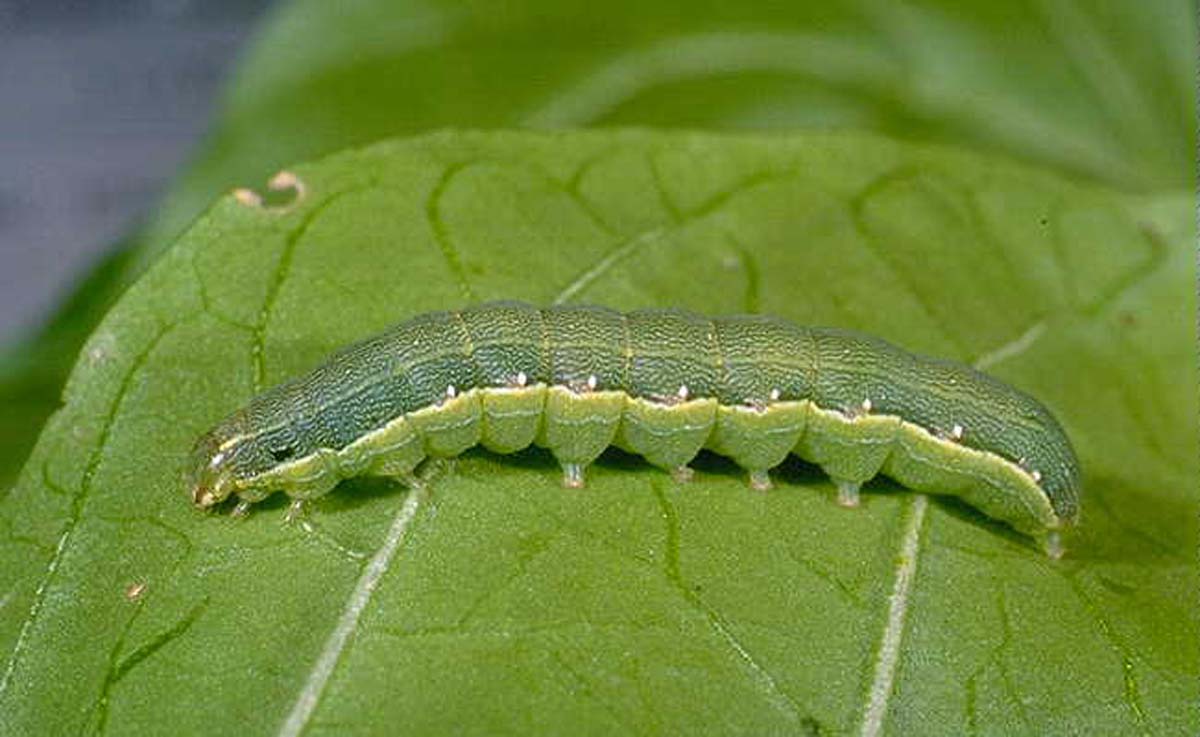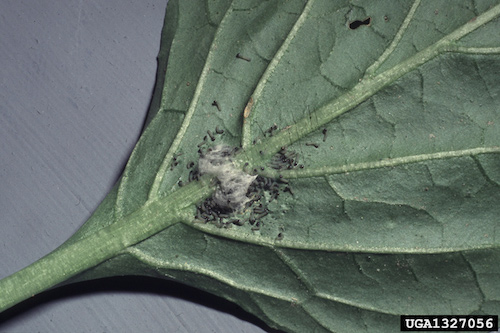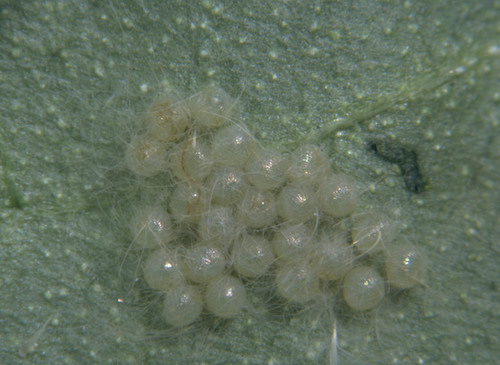Beet Armyworm
Spodoptera exigua
|
Late instar beet armyworm larva, photo by Jeff Gore. |
Hatching cluster of beet armyworm eggs. |
|
Small cluster of beet armyworm eggs. Note covering of anal hairs. |
Adult beet armyworm moth. |
Beet armyworm larvae can vary from light green to nearly black. They have four pairs of abdominal prolegs and a dark head capsule. Many fine, white wavy lines run along the back, and a broader tellow stripe runs along each side. There is usually a distinctive dark spot on each side, just above the second pair of true legs. Females lay eggs in masses, covering them with hairs and scales. The eggs hatch in a few days and larvae feed for about three weeks, skeletonizing foliage and sometimes covering it in fine webbing.
Although there are several generations per year, beet armyworms do not overwinter in Kansas and are not usually a problem until late summer or early fall. Significant mortality can be inflicted by a parasitoid, Hyposoter exigue, and many predators will feed on eggs and young larvae. Natural biological control is typically sufficient to prevent economic damage, although populations can escape control in some years. Larval feeding rarely causes serious damage on established stands, unless defoliation becomes severe. Newy planted fields are more susceptible, as seedlings may be clipped off near the soil surface and killed. The economic threshold is probably similar to that for army cutworms – four to five larvae per square foot on established stands, or one to two per square foot on seeding stands, sampled with a sweep net. Late fall infestations often disappear after the first hard freeze, but this can be difficult to predict. Beet armyworms are difficult to control with insecticides, and options are limited.
Please refer to the most recent version of the Alfalfa Insect Management Guide for specific control alternatives.
Page last updated 4/21/2024 by J.P. Michaud.



